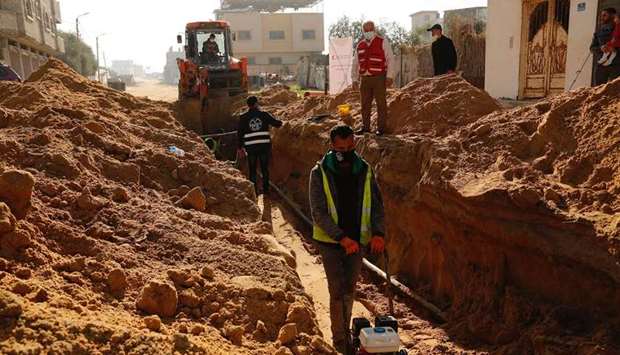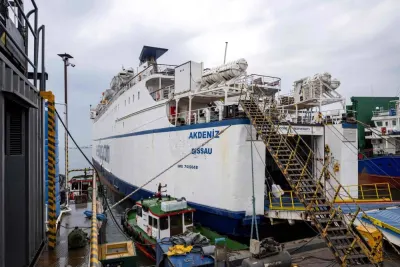Adel al-Zaanoun, a resident of Gaza, stood in front of his home to watch the workers laying sewage pipelines in his district, waiting for the turn of his home to be connected to the new network, which will put an end to many years of suffering.
“It has been a tragedy over the past decade,” he said. “In my neighbourhood, there was no infrastructure at all. The soak pits are hazardous to the population, with its pollution and constant bad smell."

Supported by the Qatar Red Crescent Society (QRCS) for the benefit of 70,000 people living in southern Gaza city, this activity is part of a project to construct a sewage system in Gaza.
It involves laying 7km of wastewater collection and drainage pipelines measuring 6-16” in diameter.
The $400,000 project is located in the vicinity of Gaza’s PS11 wastewater pumping station.
On the importance of the project for the public, Khalil Mohamed Shaqra, manager of the Co-ordination and Supervision Department at Gaza Municipality, said it would reduce the pollution and environmental impact of soak pits dug by the community, which made things even worse during winter.
As soak pits mushroomed, he added, the municipality personnel made extensive efforts to solve this problem despite the lack of financial resources to renovate the local infrastructure.
“By virtue of the new QRCS project, we will be able to regulate the discharge of wastewater in the area and connection to the PS11 station, inaugurated by the QRCS in 2015,” Shaqra explained. “This way, we can minimise the environmental risks caused by septic tanks and stop pumping untreated sewage into the sea.”
“It has been a tragedy over the past decade,” he said. “In my neighbourhood, there was no infrastructure at all. The soak pits are hazardous to the population, with its pollution and constant bad smell."

Workers inspecting a manhole
Supported by the Qatar Red Crescent Society (QRCS) for the benefit of 70,000 people living in southern Gaza city, this activity is part of a project to construct a sewage system in Gaza.
It involves laying 7km of wastewater collection and drainage pipelines measuring 6-16” in diameter.
The $400,000 project is located in the vicinity of Gaza’s PS11 wastewater pumping station.
On the importance of the project for the public, Khalil Mohamed Shaqra, manager of the Co-ordination and Supervision Department at Gaza Municipality, said it would reduce the pollution and environmental impact of soak pits dug by the community, which made things even worse during winter.
As soak pits mushroomed, he added, the municipality personnel made extensive efforts to solve this problem despite the lack of financial resources to renovate the local infrastructure.
“By virtue of the new QRCS project, we will be able to regulate the discharge of wastewater in the area and connection to the PS11 station, inaugurated by the QRCS in 2015,” Shaqra explained. “This way, we can minimise the environmental risks caused by septic tanks and stop pumping untreated sewage into the sea.”



